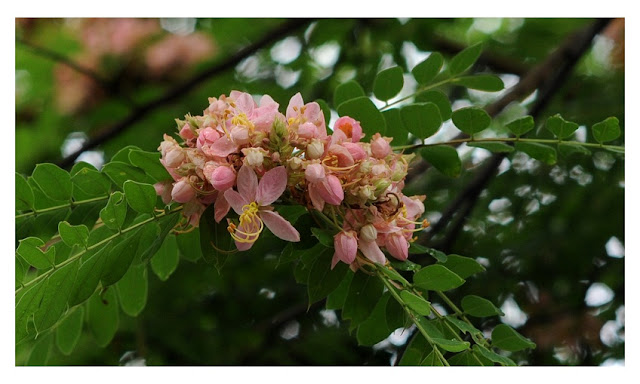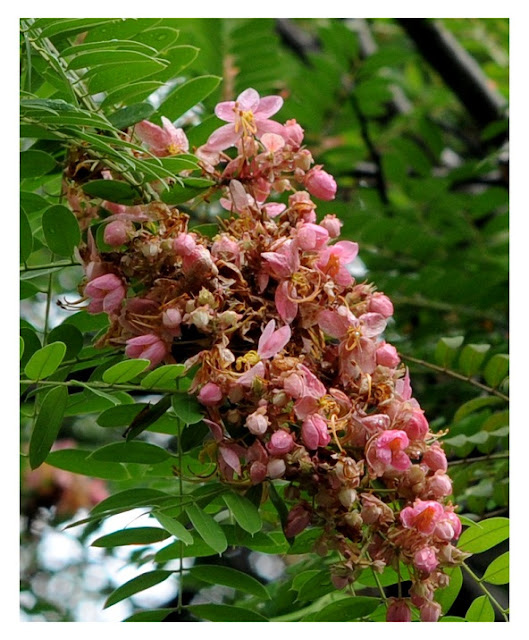What could be common to a tiny forest bird and a temple statuette that embodies grace, beauty and wild power?
Having looked at a small group of 4-5 highly energetic and extremely acrobatic birds with small grey heads, small straight sharp beaks, large black eyes and yellow bodies, I looked expectantly at Sunita. Beguiled by the beauty and thrilled at finding a new bird, I wanted a name – to end the delightful morning walk on a satiated note.
“OK, so this bird that you see is ... take a good look. Notice the greenish-yellow upper body, the whitish-grey throat. The yellow on the belly all the way to the vent – it glows in the light.”
A shaft of white light penetrated the top-canopy and lit up a space surrounded by a cluster of branches in the mid-canopy of a copse of tropical deciduous trees. Drawn to the light a buzz of winged insects circled in random flight paths and were being hawked by the birds in our viewfinder.
All of this was fine but I wanted a name.
I looked again. The birds seemed to set their sights on a winged insect and with remarkable dexterity follow its flight path, and change direction quickly to snap up the prey. Flying trapeze artists on steroids. The change of direction was random; the birds picked up their targets in mid-air and within the blink of an eye perches were exchanged.
“Notice the typical flycatcher behavior – exposed mid-canopy perch, the swift and short targeted sortie. And the large eyes.”
It was a satisfying end to a nice morning walk that had yielded Chestnut-bellied Nuthatches, Black-hooded Orioles, Hoopoes of the European race, Asian Barred Owlets, Black Redstarts, Grey Hornbills, and White-bellied Drongos among others. The small grey-yellow birds were right in the garden attached to our home and, like a true landowner, I felt a flush of pride at this newly discovered treasure. But for it to be truly mine, in my village, my garden and my backyard, I needed to know what it was called.
“OK... so this is a -- Sahastra, have you had a good look?”
Absolutely. I had, down to the soft tit-tit that emerged from the trees in a low-frequency murmur of avian satisfaction. My neck hurt, my eyes were blinded and the suspense was unbearable. All of this had just one cure – a name.
“The grey-headed Canary flycatcher. I did not know it was found here."
I didn’t care. The bird was mine for all time to come.
In subsequent Novembers investigations established that the Grey-headed Canary Flycatcher (Culicicapa ceylonensis) had made the small patch adjacent to my home a regular haunt.
The next meeting with the bird was in the Himalayas, in May, as we descended the Loharjung-Wan road towards Didana. We heard the chee-weeeee-wee call with a soft whistle before the long weeeee and they were almost always in mixed hunting flocks. Jennifer informed us that they often make up the extremities of these flocks, a bit like the advance guard.
My first encounter with the birds in southern India was at Muthodi and again they were quite vocal. The habitat was different here -- not the montane oak forests of the Himalaya, or the dry-deciduous groves of Rae Bareli in the Gangetic flood-plains -- but the birds behaved just the same. The call, the perch, dexterity and the delight.
The next day while driving back to Bangalore, we stopped at the Belur temple. Its scale is not what one expects – small and star-shaped as opposed to the huge imposing masses that a lot of temples are. In his book “Diving the Deccan”, Bill Aitken found it an uninspiring anti-climax. On our way back, birding talk was interspersed with notes of the archaeological, and I managed a summary:
“The Belur Temple is like a (canary) flycatcher, small but exquisitely crafted.”
Beej remarked, “You must be the only birder ever to imagine such an example. Or for that matter, any archaeologist.”
 |
| The Huntress at Belur, lit by a shaft of evening light |
Bill Aitken can try some birding, I guess, and start with the flycatchers. It will ensure that he is better appointed when he is in the presence of the Belur Huntress the next time round.




























